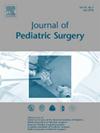小儿肿瘤实体瘤切除术患者术后早期发热。
IF 2.5
2区 医学
Q1 PEDIATRICS
引用次数: 0
摘要
背景:术后发热是肿瘤切除术后常见的症状,通常需要进行广泛、昂贵的检查。本研究的目的是确定肿瘤患者术后发热的发生率和危险因素,评估真正感染的发生率,并确定发热检查的效用。方法:单机构回顾性图表回顾(2018-2023),确定在实体瘤切除术后第0、1或2天出现术后发热(≥38.0°C)的肿瘤患者。收集的变量包括术前化疗、有无中央线、手术类型、肠切除术、手术长度、伤口类型、术中低温(180mg/dL)、术前中性粒细胞计数和抗生素给药。发热检查包括尿检、尿培养、血培养和胸片。使用广义线性混合模型分析发热预测因子。结果:纳入222例患者,年龄0.01 ~ 40.35岁(中位数5.27,SD=8.32)。术后早期发热94例(42%)。预测发热的因素包括术中输血(p=0.032)、术后输血(p=0.032)、foley catheter (p=0.032)。结论:小儿肿瘤患者术后发热较为常见。感染的病因是罕见的,经验性治疗是常见的,和检查是昂贵的。单纯发热可能不需要在实体瘤切除后的前2天内进行检查。检测和治疗应保留给那些有明显症状的人。研究类型:回顾性研究证据等级:一级。本文章由计算机程序翻译,如有差异,请以英文原文为准。
Early postoperative fever in pediatric oncology patients undergoing solid tumor resection
Background
Postoperative fever is common following cancer resection and often prompts extensive, costly workups. The purpose of this study was to determine the incidence of and risk factors for postoperative fever in oncology patients, evaluate incidence of true infection, and determine the utility of fever workup.
Methods
Single institution retrospective chart review (2018–2023) identified postoperative oncology patients who developed postoperative fever (≥38.0 °C) on postoperative days 0, 1, or 2 following solid tumor resection. Collected variables included preoperative chemotherapy, presence of central line, operation type, bowel resection, operative length, wound class, intraoperative hypothermia (<35 °C), transfusion, hyperglycemia (>180 mg/dL), preoperative neutrophil count, and antibiotic administration. Fever workup included urinalysis, urine culture, blood culture, and chest x-ray. Fever predictors were analyzed using a generalized linear mixed model.
Results
Cohort included 222 patients, aged 0.01–40.35 years (median 5.27, SD = 8.32). Ninety-four patients (42 %) developed early postoperative fever. Factors predictive of developing fever included intraoperative transfusion (p = 0.032), postoperative transfusion (p = 0.032), foley catheter (p < 0.001), neutropenia (p = 0.001), and sarcoma histology (p = 0.006). Of those who developed fever, 36 % (34/94) were treated with empiric antibiotics and 73.4 % (69/94) underwent febrile workup (average cost $455). Only 2.8 % (2/94) of febrile patients had an infectious etiology requiring treatment. Both had hemodynamic instability and positive blood cultures.
Conclusions
Postoperative fever is common in pediatric cancer patients. Infectious etiology is rare, empiric treatment is common, and workup is costly. Fever alone may not necessitate a workup within the first 2 postoperative days following solid tumor resection. Testing and treatment should be reserved for those with significant symptomatology.
Type of study
Retrospective Study.
Level of evidence
Level I.
求助全文
通过发布文献求助,成功后即可免费获取论文全文。
去求助
来源期刊
CiteScore
1.10
自引率
12.50%
发文量
569
审稿时长
38 days
期刊介绍:
The journal presents original contributions as well as a complete international abstracts section and other special departments to provide the most current source of information and references in pediatric surgery. The journal is based on the need to improve the surgical care of infants and children, not only through advances in physiology, pathology and surgical techniques, but also by attention to the unique emotional and physical needs of the young patient.

 求助内容:
求助内容: 应助结果提醒方式:
应助结果提醒方式:


